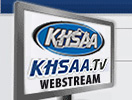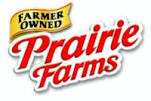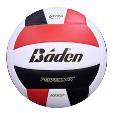08/01/14-Football Overtime Procedures
PrintKHSAA FOOTBALL OVERTIME PROCEDURES
VERBATIM – NFHS Recommended Procedure for Resolving Tied Games
Revised 2014 SEASON
An overtime period is untimed play after a regulation game has ended with the score tied. During an overtime period, each team has an opportunity for an offensive series of downs. However, an overtime period may include only one offensive series of downs if the defensive team scores a safety or touchdown.
3-1: When the score is tied at the end of the fourth period, the referee will instruct both teams to return to their respective team boxes. There will be a three-minute intermission during which both teams may confer with their coaches. All game officials will assemble at the 50-yard line, review the overtime procedure, and discuss how penalties, if any, including any carry-over penalties from the regulation contest will be assessed to start the overtime procedure. (See 8-3-5,6) At the end of the intermission, the head linesman will go to the team on the side of the field where the line to gain equipment is located and the line judge will go to the other team. They will inform the coaches of any special penalty enforcements that apply.
3-1: When the score is tied at the end of the fourth period, the referee will instruct both teams to return to their respective team boxes. There will be a three-minute intermission during which both teams may confer with their coaches. All game officials will assemble at the 50-yard line, review the overtime procedure, and discuss how penalties, if any, including any carry-over penalties from the regulation contest will be assessed to start the overtime procedure. (See 8-3-5,6) At the end of the intermission, the head linesman will go to the team on the side of the field where the line to gain equipment is located and the line judge will go to the other team. They will inform the coaches of any special penalty enforcements that apply.
3-2-1: At the coin toss in the center of the field the visiting-team’s captain shall be given the privilege of choosing “heads” or “tails” before the coin is tossed. The winner of the toss shall be given his choice of defense or offense first, or of designating the end of the field at which the ball will be put in play for this set of downs. The loser will have his choice of the other options. The referee will indicate the winner of the toss by placing a hand on his shoulder. To indicate which team will go on offense, the referee will have that captain face the goal toward which his team will advance and indicate this with the first-down signal. The other team captain will face the offensive captain with his back toward the goal he will defend.
3-2-1: At the coin toss in the center of the field the visiting-team’s captain shall be given the privilege of choosing “heads” or “tails” before the coin is tossed. The winner of the toss shall be given his choice of defense or offense first, or of designating the end of the field at which the ball will be put in play for this set of downs. The loser will have his choice of the other options. The referee will indicate the winner of the toss by placing a hand on his shoulder. To indicate which team will go on offense, the referee will have that captain face the goal toward which his team will advance and indicate this with the first-down signal. The other team captain will face the offensive captain with his back toward the goal he will defend.
3-5-1: Each team shall be permitted one time-out during each overtime period (a series for A and a series for B). The team scoring the greater number of points in the overtime shall be declared the winner. The final score shall be determined by totaling all points scored by each team during both regulation time and overtime periods.
5-1-1: To start the overtime, the offensive team shall put the ball in play, first and goal, on the defensive team’s 10-yard line or succeeding spot if carry-over penalty has been administered (15-yard line for six-player football) anywhere between the hash marks. The first offensive team shall have a series of four downs. That series shall be terminated by any score by the offensive team or if the defensive team has possession of the ball.
If the team on offense scores a touchdown, it is entitled to the opportunity for a try unless the points would not affect the outcome of the game or playoff qualifying.
A field-goal attempt is permitted during any down.
If the defensive team gains possession, the ball becomes dead immediately and the offensive team’s series of downs is ended.
After the first team on offense has completed its series of downs, the first team on defense will become the offensive team with the ball in its possession at the same 10-yard line anywhere between the hash marks. The same end of the field will be used for possessions by both teams during the two sets of downs to ensure equal game conditions and conserve time.
If the score remains tied after each team has been given one series of downs in an overtime period, then the procedure shall be repeated with other overtime periods until a game winner is determined. In this case, there shall be an intermission of two minutes. At the subsequent meeting of team captains, the loser of the overtime coin toss will be given first choice of the options. If additional overtime periods are required, then first options will be alternated with no coin toss.
5-1-3: If a safety is scored by the offensive team, the succeeding spot will be the 10-yard line in possession of the team that was on defense, provided the defensive team has not had its series of downs (the temporary overtime score is: Team A-2; Team B-0).
When the defensive team gains possession of the ball, the down and series immediately end for the offensive team.
5-2-1: The offensive team shall be awarded a new series of downs when any one of the following occurs:
a. Offensive team recovers a scrimmage kick (field-goal attempt) between the goal lines after it has been touched first by the defensive team beyond the neutral zone.
b. Defensive team is guilty of roughing the kicker, place-kick holder, snapper or passer.
5-3-1: The line to gain is always the goal line regardless of whether or not a penalty enforcement places the ball more than 10 yards from the goal line to start a new series.
8-1: If the defensive team scores a safety or touchdown, the game is ended.
8-3: No try will be attempted if the winner of the game has been determined.
10-4-3: Post scrimmage kick enforcement is not applicable in this procedure.
RESOLVING TIED GAMES INTERPRETATIONS
(For those state associations utilizing the procedure as written)
3.1.1 SITUATION A: On fourth down in overtime play, A scores a touchdown. After the score, but before the try, B1 commits an unsportsmanlike foul. Ruling: The penalty is enforced from the succeeding spot on the try. Nonplayer fouls, nonplayer unsportsmanlike fouls and dead-ball fouls are penalized on the succeeding spot.
3.1.1 SITUATION B: During the down in which time expires for the fourth period, A1 advances for a touchdown making the score B-22 and A-20. On the try A2 passes complete to A3 in the end zone. Following the try B1 commits an unsportsmanlike foul. Ruling: The penalty for the foul by B1 after the successful try will be administered from the succeeding spot to begin overtime play. Comment: In this situation the referee should explain to the captains at the time of the coin toss the fact the penalty will be administered on the first series of downs in the overtime. The place from which the ball will be put in play for each team could have an effect on the choice made by the winner of the toss.
3.1.1 SITUATION C: When the regulation game ends in a tie, the teams use the recommended tie-breaking procedure. A wins the toss and elects to take the ball. A1 scores on the third down. After A1 crosses the goal line: (a) A2 clips B1; or (b) B1 strikes A2. Ruling: Dead-ball fouls in both (a) and (b). The score counts and the penalties in both (a) and (b) are enforced on the try, because that is the succeeding spot.
3.1.1 SITUATION D: On third and 4 in overtime play, B recovers a fumble or intercepts a pass. Ruling:
The down ends as soon as B1 recovers or intercepts. In both cases the series of downs is ended for A.
3.1.1 SITUATION E: On third and 6 in overtime play Team A attempts a field goal. The attempt is not successful and B recovers on the 1-yard line. Ruling: The down ends when B1 recovers. The series is ended for A.
3.1.1 SITUATION F: The fourth quarter ends during a scoring play. During the successful 2-point try, B9 is called for pass interference. A accepts the result of the play, which ties the score and chooses to have the penalty assessed at the succeeding spot. Ruling: This is correct. Since A, by rule, can choose succeeding spot enforcement, and the try was successful, A will likely take enforcement at the succeeding spot to begin overtime. Game officials must be certain to explain the options clearly, not only during penalty administration, but also during the overtime coin toss.
3.1.1 SITUATION G: In overtime play with third and goal from B’s 4-yard line, B1 interferes during a forward pass. Ruling: If the penalty is accepted it will be third and goal for A on B’s 2-yard line.
3.1.1 SITUATION H: In overtime play on second down from the 8-yard line, B1 commits pass interference. Ruling: Second down for A on the 4-yard line if the penalty is accepted.
3.1.1 SITUATION I: In overtime play, (a) On second; or (b) fourth down from the 9-yard line, A1 interferes on an incomplete forward pass. Ruling: In (a) it is A’s ball second down from its 24-yard line. In (b) B will decline the penalty and take the ball on the 10-yard line.
3.1.1 SITUATION J: At the end of the regulation game the score is tied, 7-7. It was previously announced that the recommended tie-breaking procedure would be followed. Immediately after the last down of the fourth period A1 strikes B1. Ruling: A1 will be disqualified and may not participate during the overtime period. The penalty for A1 ‘s foul will be administered from the succeeding spot. If B is the first to put the ball in play it will be from the 5-yard line. If A is the first to put the ball in play it will be from the 25-yard line.
3.1.1 SITUATION K: At the beginning of the overtime, A wins the toss and elects to go on offense. On first down, B1 intercepts a pass, but then fumbles and A1 recovers. RULING: The ball became dead and A’s series ended immediately when B1 intercepted. A1 recovered a dead ball. B will put the ball in play to start its series of four downs, first and goal from anywhere between the inbound lines on the 10-yard line.
3.1.1 SITUATION L: During the down in which time expires for the fourth period, A scores a touchdown to make the score 14-13. During the successful kick try, B1 roughs the kicker/holder. RULING: If A accepts the score, the penalty is enforced to start the overtime, if an overtime is played. If A accepts the penalty, the try will be replayed from the 1½-yard line. (2-41-10; 8-3-5)
3.1.1 SITUATION M: During an overtime period, it is fourth and goal from the 6-yard line. During A’s unsuccessful field-goal attempt, B1 charges into the place-kick holder. RULING: It will be first and goal for A at the 3-yard line following enforcement of the roughing penalty which also includes an automatic first down.
3.1.1 SITUATION N: Following a scoreless first overtime period, the captain of B chooses to play the second overtime period at the opposite end of the field. RULING: This is permissible, as it is one of the options to begin each overtime period.
3.1.1 SITUATION O: During the first overtime period, A chooses to go on offense first and scores a touchdown on the third play of the series. During the successful kick try, the holder is roughed by B1. A accepts the successful kick try. RULING: Since A accepted the result of the play, B will be penalized from the succeeding spot. B will start its overtime series from the 25-yard line after the penalty for roughing the holder is enforced. (10-5-2)
3.1.1 SITUATION P: In overtime play with fourth and goal from B’s 24-yard line, BI interferes during a legal forward pass. RULING: Fourth down and goal for A on the 12-yard line if the penalty is accepted.
3.1.1 SITUATION Q: During the first overtime period, Team A: (a) scores on its first series; or (b) is stopped short of the goal line on its first series. Following the first series, Team A huddles near its sideline with all players from the previous play remaining inbounds. Team B reports to the 10-yard line of scrimmage ready to begin its series. Team A remains at the sideline when the ready for play is blown by the referee. RULING: In (a), because there was a score, there is a one-minute intermission after the try. In (b), the series begins immediately following the change of A and B to respective sides of the line of scrimmage without a break. The covering official should not allow the ball to be put in play, and should assess a delay of game foul on Team A to prevent a travesty. (3-5-7l, 3-6-2f)
































